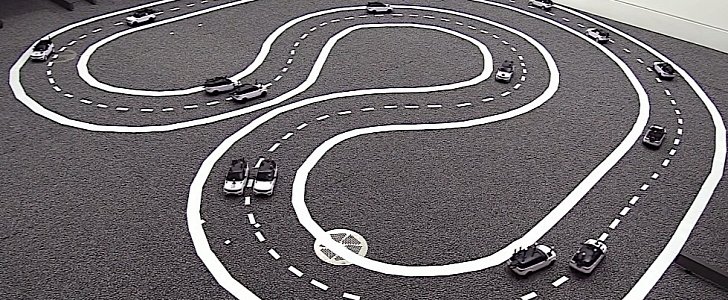All the entities working toward the creation of the world's first truly self-driving car are pointing to the fact that autonomous vehicles (AV) will significantly improve safety for all those on the roads. But there are more benefits, some of them with immediate impact, to come from the development of such machines.
According to a study conducted by researchers from the Cambridge University, AVs could help cut travel time by up to a third, including for people who do not use such vehicles.
By construction, AVs are likely to be connected to one another, meaning they will know in advance their relative position and what they are planning to do. This cooperative way of motoring is essential in both cutting down travel times and insuring a safe trip.
Today, all it takes for traffic to grind to a halt is for a car to stop somewhere down the road. Cars that talk to one another will have the ability to state their intentions so that the others could calculate in advance what to do so that cues don't start forming.
Cambridge researchers used 16 miniature driverless robot cars for the study. The machines were made to drive around an improvised two-lane track in both connected and not-connected modes, and even an erratic driver was included into the mix.
When not connected, the machines behaved like human drivers would when a car in front comes to a stop: they waited for a gap on the other lane to appear so that they could sneak in.
When stating their intentions to the others, cars in the outer lane slightly slowed down, allowing the ones behind the stopped vehicle to pass it without having to come to a halt.
After punching in the numbers, researchers found that there was a 35 percent improvement in traffic flow as a result.
The findings of the study will be publicly presented in Monreal, Canada, at the International Conference on Robotics and Automation (ICRA) later this week. Following the presentation, the research will expand the study to include more complex scenarios.
By construction, AVs are likely to be connected to one another, meaning they will know in advance their relative position and what they are planning to do. This cooperative way of motoring is essential in both cutting down travel times and insuring a safe trip.
Today, all it takes for traffic to grind to a halt is for a car to stop somewhere down the road. Cars that talk to one another will have the ability to state their intentions so that the others could calculate in advance what to do so that cues don't start forming.
Cambridge researchers used 16 miniature driverless robot cars for the study. The machines were made to drive around an improvised two-lane track in both connected and not-connected modes, and even an erratic driver was included into the mix.
When not connected, the machines behaved like human drivers would when a car in front comes to a stop: they waited for a gap on the other lane to appear so that they could sneak in.
When stating their intentions to the others, cars in the outer lane slightly slowed down, allowing the ones behind the stopped vehicle to pass it without having to come to a halt.
After punching in the numbers, researchers found that there was a 35 percent improvement in traffic flow as a result.
The findings of the study will be publicly presented in Monreal, Canada, at the International Conference on Robotics and Automation (ICRA) later this week. Following the presentation, the research will expand the study to include more complex scenarios.


